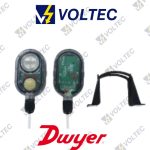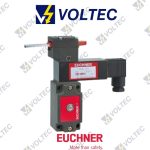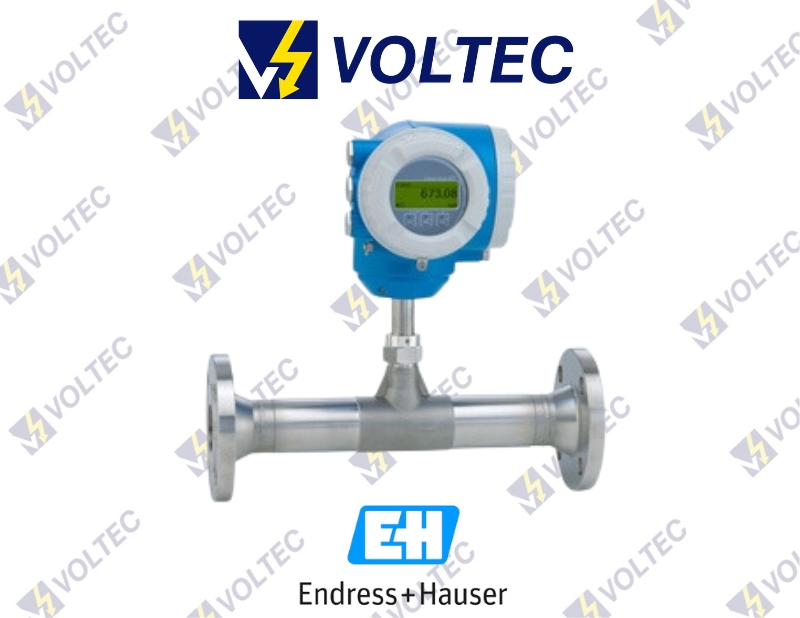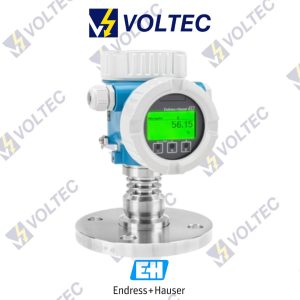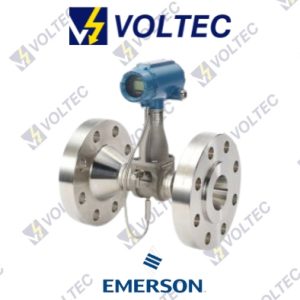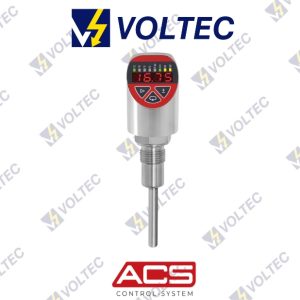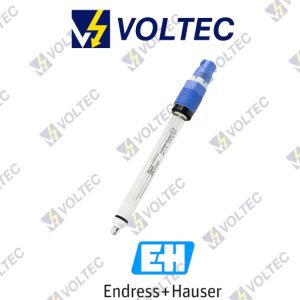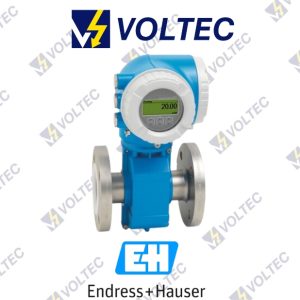Endress+Hauser Proline T-Mass F 300 Thermal Mass Flowmeter
Long-lasting inline flowmeter with a small, easily accessible transmitter.
Application-
• Measuring principle is characterized by a high operable flow range and direct mass flow measurement.
• Measurement of utility and process gases as well as gas mixtures in small line sizes Device properties.
• Inline version with DN 15 to 100 (½ to 4″).
• Bidirectional measurement; high measuring performance.
• Patented drift-free sensor with SIL 2.
• Compact dual-compartment housing with up to 3 I/Os.
• Backlit display with touch control and WLAN access.
• Remote display available.
Description
Endress+Hauser Proline t-mass F 300 thermal mass flowmeter
Measuring principle-
The thermal measuring principle is based on the cooling of a heated resistance thermometer (PT100) from which heat is extracted by the passing medium. The medium passes two PT100 resistance thermometers in the measurement section. One of these is used in the conventional way as a temperature sensor, while the other serves as a heating element. The temperature sensor monitors and records the effective process temperature while the heated resistance thermometer is kept at a constant differential temperature (compared to the measured process temperature) by controlling the electrical current used by the heating element. The greater the mass flow passing over the heated resistance thermometer, the greater the extent to which cooling takes place and therefore the stronger the current required to maintain a constant differential temperature. This means that the heat current measured is an indicator of the mass flow rate of the medium.
Gas Engine
The integrated Gas Engine functionality ensures maximum measuring performance for flow measurement. The Gas Engine developed by Endress+Hauser is a software-based database of typical standard gases and their specific properties. The Gas Engine calculates the properties of gas mixtures based on the percentage shares of up to 8 gas components.
The Gas Engine functionality enables:-
• Calibration with air; no need for expensive and complex calibration with real gas
• Precise conversion of air to other gases; no recalibration required
• Exact measurement of single gases and also of gas mixtures
• Dynamic correction of pressure and temperature changes
The device can be configured for 21 freely selectable gases and water vapor.
Gases available for selection:-
• Ammonia • Argon • Butane • Chlorine • Hydrogen chloride • Ethane • Ethylene • Helium • Carbon dioxide
• Carbon monoxide • Krypton • Air • Methane • Neon • Ozone 1) • Propane • Oxygen • Hydrogen sulfide
• Nitrogen • Hydrogen • Xenon.
Endress+Hauser Proline T-Mass F 300 Thermal Mass Flowmeter
Input:-
01.Measured process variables
• Mass flow.
• Temperature.
02.Calculated process variables
• Corrected volume flow• Volume flow• FAD volume flow• Flow velocity• Calorific value• 2nd temperature heat difference• Heat flow• Energy flow• Density.
Endress+Hauser Proline T-Mass F 300 Thermal Mass Flowmeter
Process variables available for order-
♦Order code for “Sensor version”:-
•Option SB “Bidirectional” measures the flow in both directions (»positive« and »negative« flow) and totalizes the flow in both directions. The device is calibrated in both directions.
• Option SC “Reverse flow detection” only measures the flow in the positive direction. The reverse flow is detected by the device but is not totalized. The device is only calibrated in the positive forward flow direction.
♦Order code for “Application package”
Option EV “Second gas group” enables the configuration of two different standard gases/gas mixtures in the device and allows the user to switch from one gas group to another using the status input or (if available) via bus communication.
Measuring range- The available measuring range depends on the choice of gas, size of the pipe and on whether flow conditioners are used. Each measuring device is calibrated individually with air under reference operating conditions. No recalibration is required in the case of customer-specific gases, as the device’s Gas Engine → 6 functionality converts from air to these gases.The measuring ranges calibrated for air are indicated in the following section. For information on other gases and process conditions, contact your sales organization or use the Applicator selection software.
